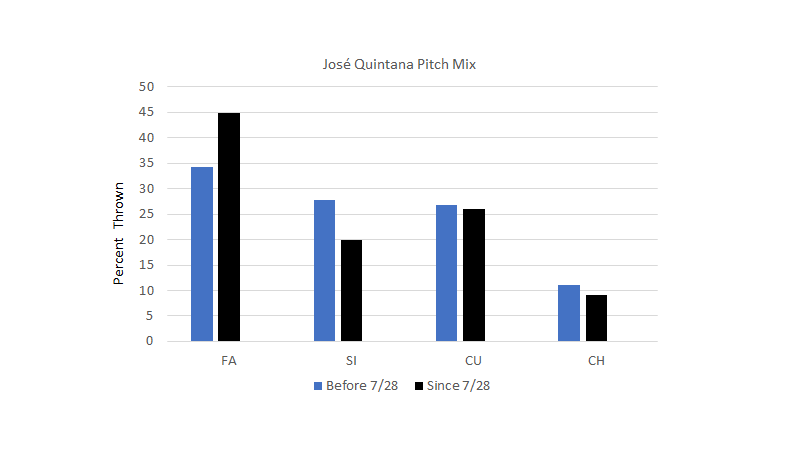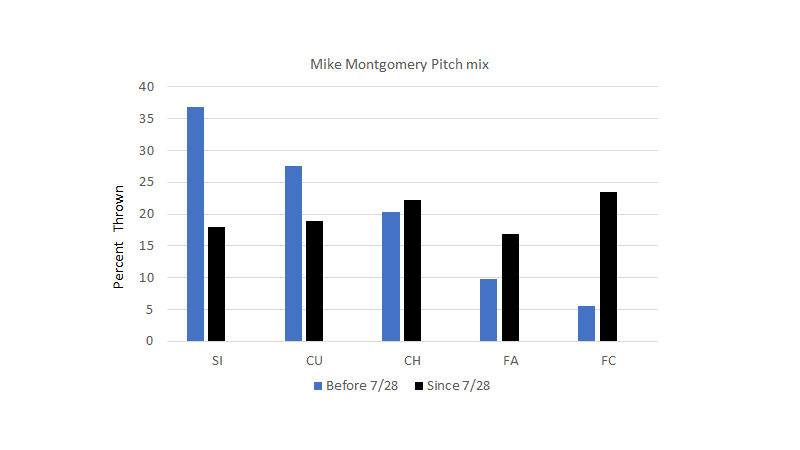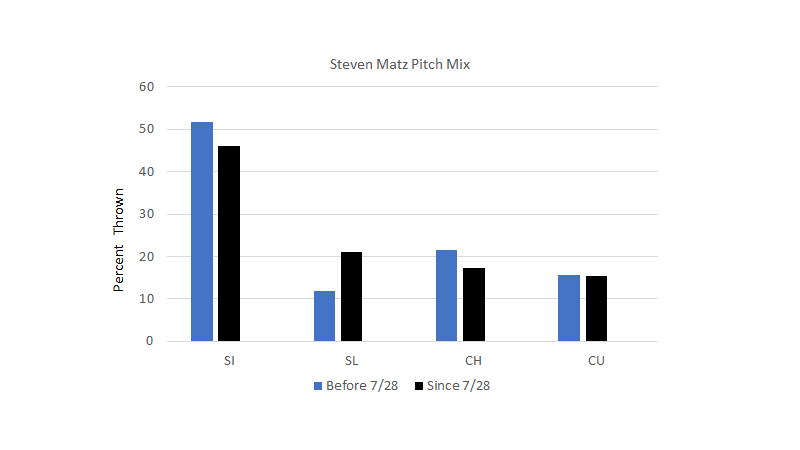In a world of Babip, Pecota, Vorp, and Eckstein, plus F-Strike%, xWOBA, and hosts of other advanced stats, we have oodles of options for slicing and dissecting player performances. It can be a great thing, but the older I get the more I believe that the most complicated things are best expressed in the simplest terms. Take me to brass tacks and I’ll see what something is built on.
That’s how I think of pitcher evaluation. There is so much that goes into successfully hurling a baseball that can make the good and bad hard to discern. Just read David Cone and Jack Curry’s book, Full Count, or listen to Nick Pollack and Alex Fast’s interview with Cone about it.
When I boil it all down, though, I want to know up to just three things: Maximum velocity, strikeout percentage, and strikeout-minus-walk percentage. If I know how hard a guy can fling it, how often he gets Ks, and if they’re limiting walks, I feel like I can get a good sense of whether or not to buy into a guy’s performance.
If we look at the last 30 days, we have some fun surprises in K% among the league leaders. There’s a seasoned veteran revival in José Quintana (11th of 70 qualifiers), an enigmatic player stringing together healthy starts in Steven Matz (21st), and a bounce-around guy possibly finding his groove in a quiet market in Mike Montgomery (23rd). Let’s consider just their end-game results over the previous month to get some perspective on how good they’ve been.
| Player | K% Before 7/29 | K% Since | K-BB% Before 7/29 | K-BB% After | fWAR Before 7/29 | fWAR After |
|---|---|---|---|---|---|---|
| J. Quintana | 19.8 | 29.8 | 12.9 | 26.5 | 1.9 | 1.2 |
| S. Matz | 21.4 | 25.7 | 14.3 | 19.5 | 0.8 | 0.7 |
| M. Montgomery | 12.3 | 25 | 3.3 | 17.9 | -0.6 | 0.5 |
For a point of reference, the league average K% is 22.7. For K-BB%, it’s 14.8. Each of these pitchers has gone from below average before the last month to above-average since and has created the majority (or in Montgomery’s case, the entirety) of their value in their last five or six starts.
The Pitch Mix Changes

“He’s throwing more fastballs” isn’t really something we’re saying in 2019 about pitchers who are having more success, as breaking balls continue to take the league by storm. Yet, that’s what Quintana’s doing. And it’s working. He’s divested from his sinker, shaving nearly 8% off its use and distributing those offerings instead as four-seamers, which he’s now throwing nearly 45% of the time. That’s up almost 10% over the last month. On its face, that’s generally a smart tradeoff, as sinkers create more balls in play and room for error than any other pitch. But the movement on Quintana’s four-seamer also has less arm side run than usual, which makes it deceptive. That might help explain how he’s using it to get whiffs at a rate that’s better than 84% of his peers, despite its below-average velocity.
Quintana is now using the pitch to both get more strikes earlier in at-bats and to put batters away. When he’s gotten to two strikes in a matchup he’s trimmed down the sinker usage again and instead favored four-seamers and curves. This is a strategy the Astros have used to great success over the last few years and, until batters find a way to counter, it makes sense for pitchers to continue to use. Countering it may be tough, though, as we naturally have more difficulty tracking objects that go up and down compared to side to side. This feels like the start of a new wrinkle figured out by a guy who’s been around for what feels like forever, while more than reliable almost the entire time.

Mike Montgomery has the largest improvement of the three pitchers featured here. We might be able to say that’s because he had the most room to improve — his 3.3% K-BB rate before the last month was comically low — but he’s still made the improvements. He’s shuffled his repertoire so much since moving to Kansas City that it’s almost startling. Instead of leaning into one particular pitch like Quintana, he’s leaned into all of them. Out of all five of his offerings, he hasn’t thrown a single one less than 16.9% or more than 22.2% over the last month.
He’s gone from being a sinker-curve-changeup guy who sprinkles in some four-seamers and token cutters to being a complete enigma for hitters. While the above graph is a bar chart to show the change in each pitch’s distribution, a pie chart would look like one of the most considerate ways to share pizza you could imagine.
The biggest change for him has been how he’s featured his cutter. He’s throwing it nearly four times as much as he was earlier this year. It was an afterthought, especially in two-strike counts. Now he’s breaking it out with his changeup and curve to show hitters three distinct looks with different wiggle or drop to different parts of the zone. The results may waver some, but maintaining this kind of wild card presence could help Montgomery continue to be a strong option.
 Steven Matz has been plagued by injury concern and inconsistency since debuting in the majors back in 2015. Right now, he’s getting better results, but it’s hard to tell if he’s figured something out. Over the last month, he’s siphoned away usage from his sinker and changeup and piled it onto his slider, which he’s now using twice as much as he was beforehand. It’s up to 21% usage in his last five starts and 13.6% on the year, which would stand as a career-high. What’s weird is that it hasn’t really generated strikes. It ranks in the 49th percentile in CSW over the last month and the 47th percentile for the year.
Steven Matz has been plagued by injury concern and inconsistency since debuting in the majors back in 2015. Right now, he’s getting better results, but it’s hard to tell if he’s figured something out. Over the last month, he’s siphoned away usage from his sinker and changeup and piled it onto his slider, which he’s now using twice as much as he was beforehand. It’s up to 21% usage in his last five starts and 13.6% on the year, which would stand as a career-high. What’s weird is that it hasn’t really generated strikes. It ranks in the 49th percentile in CSW over the last month and the 47th percentile for the year.
When he’s reached two strikes he’s thrown less than 10% sliders all year. This shows it’s really not something hitters have to think about. But the big change has come in how he divides his attention on his other secondary offerings. Instead of going to his changeup after his sinker he’s switched to his curve as his primary option. Overall, it’s tougher to see how the puzzle pieces are coming together for Matz than either Quintana or Montgomery. That said, he’s the only one of the three who features plus velocity, which could continue to help his stuff play up if his sequencing remains successful.
Strikeout percentage opens a big door to understanding how a pitcher is performing in a given moment. Walking through it can help us find what’s really driving their game and whether we can believe it.
(Photo by Dustin Bradford/Icon Sportswire)
